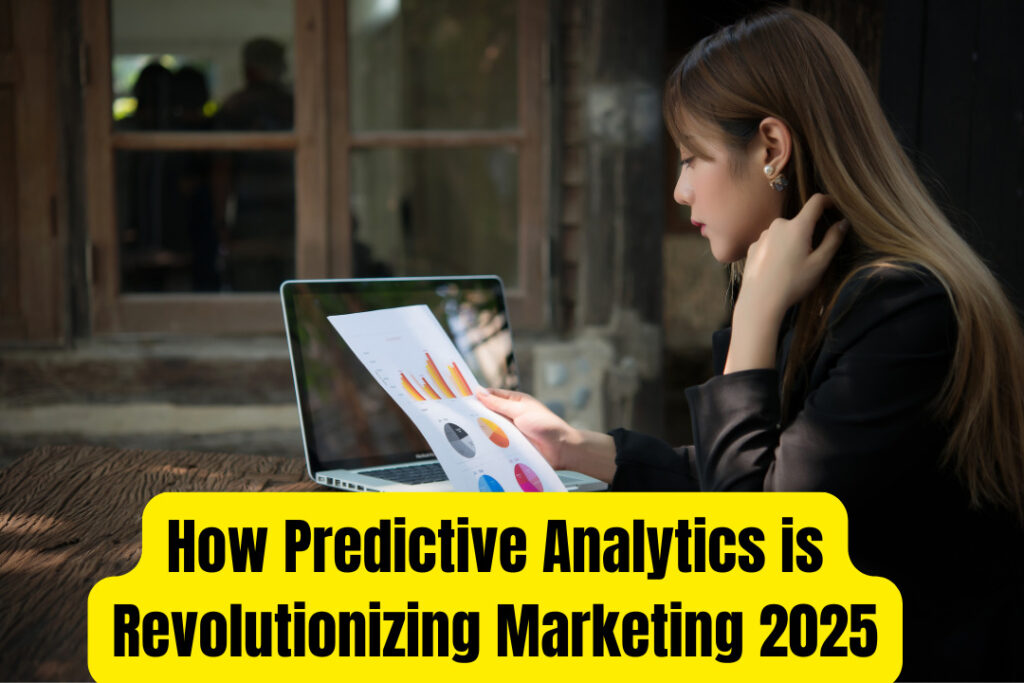The right data-driven decisions win in the fast-paced digital world. It has been the most innovative tool marketers can turn to in order to forecast trends, understand consumers, and optimize campaigns. Marketers are at the top of their games while offering personalized and effective marketing strategies by tapping into the volumes of big data with predictive analytics.
Table of Contents
What Is Predictive Analytics?
Predictive analytics would be the process of determining probability outcomes using history, statistical algorithms, and machine learning techniques. It is vastly different from the traditional style of analytics, which is done solely based on past performance analysis. Predictive analytics predicts behavior or trends in the near future. From the viewpoint of marketing, this results in understanding customer preference then predicting the need and therefore designing something that would resonate to a targeted audience.
Role of Predictive Analytics in Marketing
1. Personalized Customer Experiences
This enables the marketer to cut the audience better with extremely highly customized journeys, content, product recommendations with some promotion that is based on previous purchase behavior, browsing history, and some demographic information to aid in recommendation for the best content in this respect.
2. Lead scoring and conversion rate
Predictive models give the probability of a lead turning into a customer based on lead data. Predictive models guide sales teams to optimize resources, focus on prospects where possible, and thus determine proper outreach strategies in gaining maximum conversions.
3. Customer Retention Growth
Retaining old customers brings in new customers. Predictive analytics predicts patterns of customer behaviors where they might be leaving. Marketers can pre-intercede through loyalty programs, particular offer, or improved services with customers.
4. Better marketing campaigns
Predictive analytics can enable marketers to review past campaign histories and understand which of the strategies work and don’t, thereby planning more efficient future campaigns with better ROI through best channels, at the best time, and with the right message to reach targeted audiences.
5. Demand Forecasting
Predictive analytics will enable a business to predict the demand of a product or service, therefore it will manage its inventory, pricing strategy, and promotions. For instance, an e-commerce company will know when the peak season of shopping is and hence will be prepared with adequate stock in that particular item.
Read more: How Predictive Analytics is Revolutionizing Marketing 2025Generative Artificial Intelligence and Ethics : How to innovate responsibility in 2025
Mastering TikTok Ads: Unlocking New Revenue Streams for Small Businesses
How Predictive Analytics Works
The general process of how predictive analytics works follows this order:
- Data gathering: Sources of relevant data were tapped. This includes customer interactions/transactions, social media streams, and third-party data sets.
- Data pre-treatment: Cleaning, preparing the data for analysis, and formatting properly
- Modelling: A predictive model was generated in the help of machine learning algorithms from the event history
- Testing/validation: Confirmation of the precision of refinements of the models
- Implementation: Bringing insights of prediction into marketing actions as well as into the process of decision-making.
Some real-world application of Predictive Analytics in practice:
Amazon Recommendation Engine. This is how Amazon uses Predictive Analytics for allowing it to enable product recommendation towards the customer based upon browsing history and buying history. Thus, one of the key success factors to better improve the satisfaction level and subsequently sales.
Netflix Content Recommendations. It predicts that what a user will most probably want to watch next based upon his viewing habits and makes him stick around and thereby minimizes churn.
Customer Insights for Coca-Cola: The predictive analytics help in keeping track of the social media sentiment and emerging trends to give the company quick responses to market demands.
Problems and Issues
- Data Quality: Poor or incomplete data gives rise to incorrect predictions.
- Privacy: Collection and processing of customer information should be made in a way that follows the legal and regulatory requirements of GDPR and CCPA.
- Technical Expertise: Building and maintaining predictive models require technical skills and resources.
- Change Management: An organization needs to develop a data culture first, and then teams need to respond to the power of predictive insights.
Future of Predictive Analytics for Marketing
With the advancement of AI and ML, predictive analytics capabilities expand. It can be done more accurately by making predictions through better marketing results since it can understand real-time or even automate some part of the decision-making processes; it can create experiences based on hyper-personality; agile businesses in the same rapidly changing marketplace.
Conclusion
It transforms raw data into actional and thus affects marketing on the Earth greatly. Businesses adapt strong tool use to forecast the demand of the consumer, optimize the campaign for high productivity, and improve the outcome’s effectiveness. Predictive analytics was something of a treasure in the toolbox of marketing because it lets an organization take out hidden potential locked in the digital market.
That said, it means marketers have to make the right investment in tools, talent, and strategy to unlock full predictive power. In data-driven marketing, that predictive analytics forms a leading vanguard.


